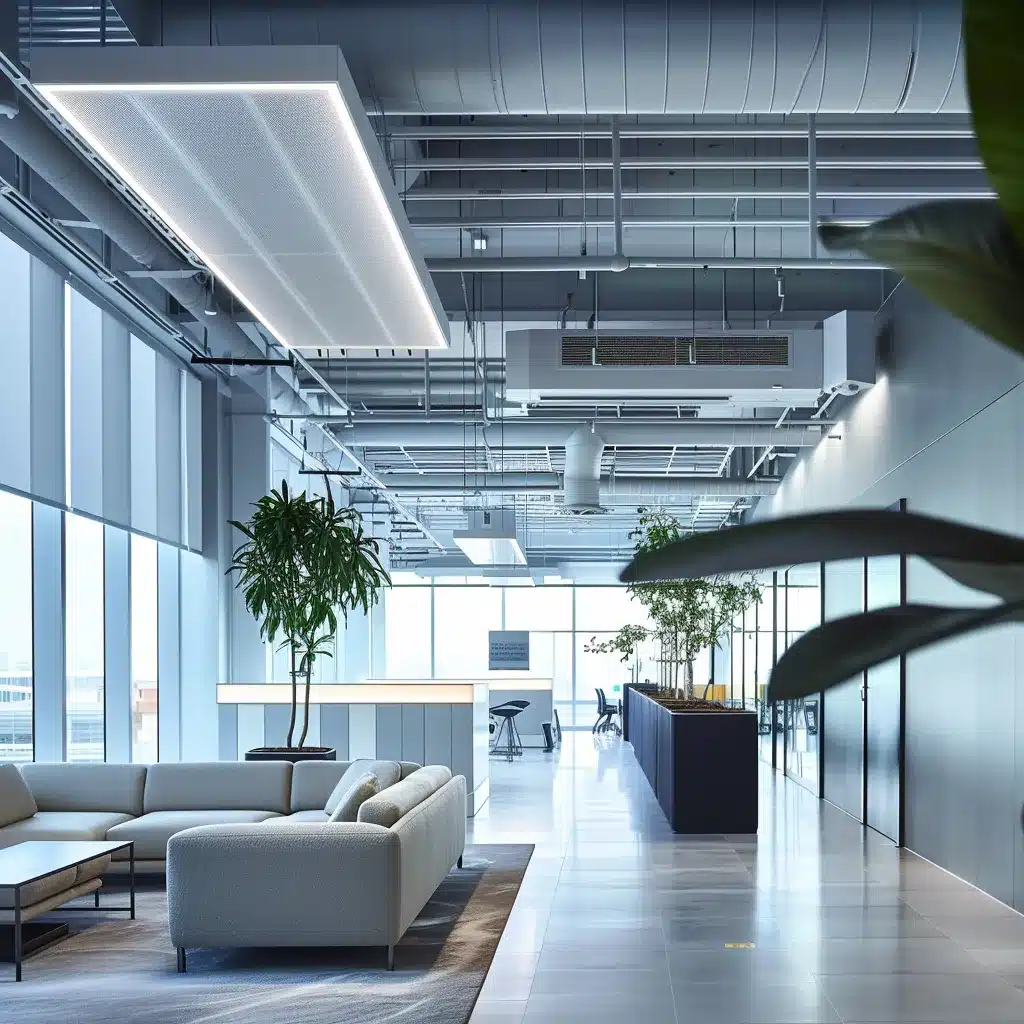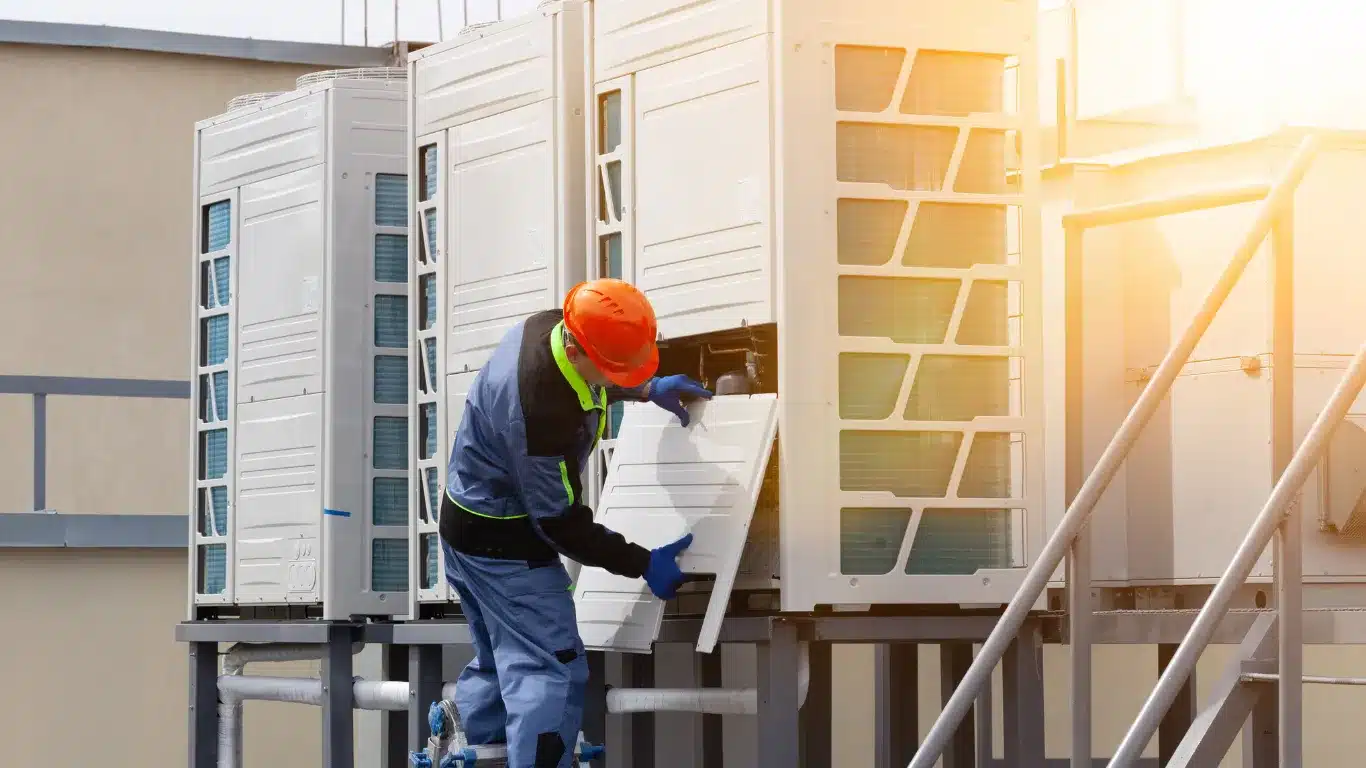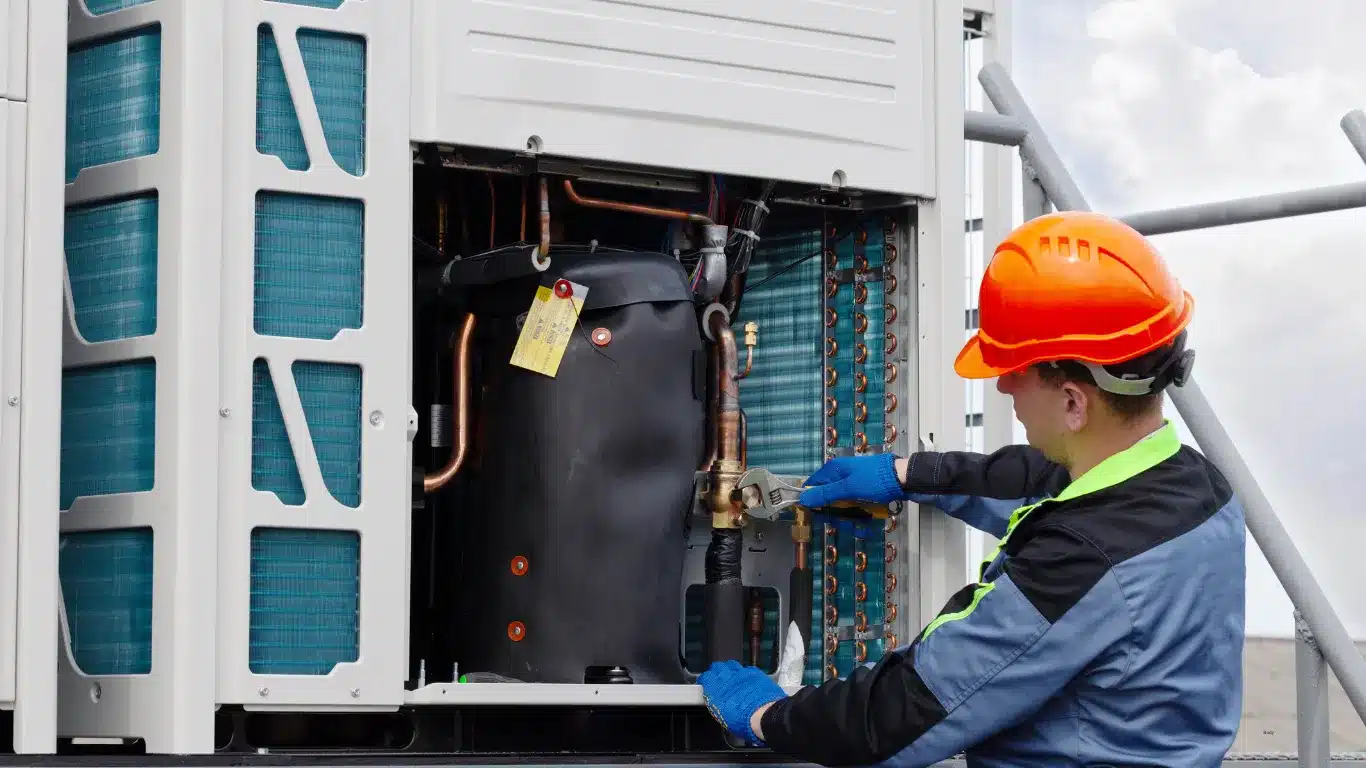
Energy Efficiency Solutions for Your Commercial AC
Is your commercial air conditioning system consuming more energy than necessary? Businesses often overlook the potential for energy efficiency improvements in their HVAC systems. This article will explore comprehensive energy efficiency solutions that can enhance your commercial AC, key components of efficient systems, and innovative technologies available today. By implementing these strategies, you can reduce costs, improve comfort, and contribute to a more sustainable environment. Addressing energy waste not only solves financial concerns but also aligns your business with modern green practices.
Comprehensive Energy Efficiency Solutions for Commercial Air Conditioning
Understanding commercial air conditioning efficiency is crucial for enhancing sustainability and optimizing equipment performance. Energy efficiency in HVAC systems not only reduces operational costs but also supports initiatives like distributed generation and demand response. This section explores the fundamentals of efficiency, emphasizing its importance and practical strategies that businesses can implement to improve their HVAC systems.
Understanding the Basics of Commercial Air Conditioning Efficiency
Efficiency in commercial air conditioning can significantly impact energy consumption and costs. Understanding how factors such as the cubic foot per minute (CFM) of airflow and the operation of the compressor affect heating and cooling needs is essential for optimizing system performance. Implementing strategies like regular maintenance and upgrading to high-efficiency pumps can lead to substantial savings and enhanced comfort in commercial spaces.
The Importance of Energy Efficiency in HVAC Systems
Energy efficiency in HVAC systems plays a critical role in managing business energy costs and ensuring optimal performance. By investing in high-efficiency HVAC equipment, businesses can not only reduce their energy consumption but also qualify for various rebates that promote sustainable practices. Innovation in HVAC technology allows organizations to enhance comfort levels while minimizing environmental impact, making energy efficiency a vital aspect of modern commercial HVAC operations.
Key Components of Energy-Efficient Commercial AC Systems

High-efficiency compressors are vital for reducing energy use and carbon emissions in commercial air conditioning systems. Smart thermostats and control systems optimize temperature settings, aligning with renewable energy sources to enhance efficiency. Variable speed fans and motors adjust airflow, providing additional utility savings while improving comfort. Each component plays a critical role in achieving energy efficiency and sustainability in HVAC construction.
High-Efficiency Compressors
High-efficiency compressors are essential in light commercial air conditioning systems, as they significantly reduce energy consumption and operational costs. These advanced compressors optimize cooling capacity and can respond dynamically to varying load conditions, ensuring that businesses do not pay for unnecessary energy expenditure. By investing in efficiency solutions that incorporate these compressors, organizations can achieve a closer alignment with their sustainability goals while enhancing overall comfort in their facilities.
Smart Thermostats and Control Systems
Smart thermostats and control systems are pivotal in modernizing energy management for commercial air conditioning. By utilizing advanced algorithms, these devices allow customers to monitor and adjust energy consumption based on real-time data and business needs. Retrofitting existing HVAC systems with smart technology not only promotes energy solutions but also enhances overall comfort and efficiency, contributing to reduced operational costs and environmental impact.
Variable Speed Fans and Motors
Variable speed fans and motors play a critical role in enhancing the energy efficiency of commercial air conditioning systems by adjusting airflow based on real-time demand. Unlike traditional fixed-speed models that operate at a constant speed, these advanced components dynamically regulate ventilation, minimizing energy waste associated with excessive cooling or heating. By optimizing performance in environments such as server rooms or spaces with varying occupancy, businesses can significantly reduce energy costs tied to their HVAC, lighting, and home appliance usage while ensuring comfort across all areas.
Benefits of Implementing Energy Efficiency Solutions
Implementing energy efficiency solutions in light commercial HVAC systems can lead to significant benefits. Enhanced performance results in lower utility bills while extending the lifespan and reliability of equipment. Additionally, upgrades such as smart thermostats contribute to improved overall indoor air quality, further aligning with sustainability goals and offering substantial cost savings in expenses.
Lower Utility Bills Through Enhanced Performance
Implementing energy efficiency solutions in commercial AC systems can significantly reduce utility bills and enhance the bottom line for businesses. By utilizing advanced technologies like heat pumps and building automation systems, organizations can optimize their cooling and heating processes, leading to substantial energy savings. Regular commercial AC repairs and maintenance in Columbus ensure that equipment operates at peak efficiency, further lowering operational costs and promoting a more sustainable business environment.
Extended Equipment Lifespan and Reliability
Implementing energy efficiency solutions, such as ground source heat pumps and advanced thermostats, can significantly extend the lifespan and reliability of commercial air conditioning systems. By optimizing heat distribution based on occupancy and operational demands, these technologies reduce wear and tear on equipment, allowing components to function efficiently over longer periods. This proactive approach not only minimizes costly repairs but also ensures consistent comfort levels, ultimately benefiting the overall performance of the HVAC system.
Improving Overall Indoor Air Quality
Improving overall indoor air quality is a significant advantage of implementing energy efficiency solutions in commercial HVAC systems. By utilizing smart automation and advanced filtration technologies, businesses can effectively reduce pollutants and enhance comfort for occupants. Programs that integrate these efficiency measures not only promote a healthier environment but also align with initiatives, such as those supported by green banks, that incentivize sustainable practices and investments, including the installation of necessary infrastructure like electric vehicle charging stations.
Innovative Technologies for Energy Efficiency
Integrating smart building technology enhances energy efficiency in commercial AC systems by optimizing operations. Utilizing IoT for real-time monitoring allows for continuous assessment and adjustment of energy usage, while energy recovery ventilation systems improve indoor air quality and reduce costs. Each of these innovations contributes to significant energy-efficient improvements, maximizing the effectiveness of machines designed to meet
efficiently.
Integration of Smart Building Technology
Integrating smart building technology into commercial HVAC systems significantly enhances energy efficiency while contributing to improved indoor air quality and reduced greenhouse gas emissions. This approach allows for real-time monitoring and control of HVAC operations, optimizing performance and ensuring that water heating and temperature settings align with actual occupancy. Electrification of heating systems further supports sustainability initiatives, ultimately leading to
and a healthier environment for occupants.
Utilizing IoT for Real-Time Monitoring
Utilizing IoT for real-time monitoring in commercial air conditioning systems offers notable advantages for efficiency and sustainability. By integrating smart sensors and connected air handlers, businesses can track energy usage patterns and identify areas for renovation that align with Energy Star standards. This insight enables companies to take advantage of available incentives, optimizing their HVAC systems for sustainable energy consumption while enhancing overall operational performance.
Benefits of Energy Recovery Ventilation Systems
Energy recovery ventilation (ERV) systems offer substantial benefits for commercial air conditioning by improving air quality and reducing energy consumption. These systems capture exhaust air’s heat and moisture, transferring them to incoming fresh air, which decreases the energy required for heating or cooling. By using ERV, businesses can enhance indoor comfort levels while minimizing operational costs and supporting sustainability goals.
Assessing Your Current Commercial AC System

Conducting energy audits and assessments is vital for evaluating the performance of commercial air conditioning systems. Identifying areas for improvement and potential upgrades allows businesses to enhance efficiency and reduce energy costs significantly. This section will outline the steps involved in energy audits and highlight the key aspects to consider for effective upgrades.
Energy Audits and Assessments
Energy audits and assessments are essential for determining the efficiency and performance of commercial air conditioning systems. By examining various components, such as insulation, ductwork, and equipment specifications, professionals can identify areas that require improvement or upgrades. This thorough evaluation not only helps pinpoint energy waste but also provides actionable insights that support businesses in implementing energy efficiency solutions tailored to their specific needs.
Identifying Areas for Improvement and Upgrades
Identifying areas for improvement in a commercial air conditioning system involves a comprehensive evaluation of existing equipment, ductwork, and insulation. By systematically analyzing these components, businesses can pinpoint inefficiencies that may lead to increased energy costs. Upgrading outdated technology, such as installing variable speed drives or high-efficiency filters, can significantly enhance overall performance and support sustainability efforts, allowing organizations to achieve both comfort and cost savings.
Finding the Right Partner for Implementation
Selecting a qualified HVAC specialist is crucial for implementing energy efficiency solutions in commercial air conditioning systems. Ongoing maintenance and support from professionals ensure systems operate at peak efficiency, while evaluating return on investment for energy upgrades helps businesses understand the financial benefits. Each aspect contributes to maximizing efficiency and performance in HVAC operations.
Selecting a Qualified HVAC Specialist
Choosing a qualified HVAC specialist is critical for implementing energy efficiency solutions in commercial air conditioning systems. These professionals possess the expertise needed to assess existing equipment and recommend compliant upgrades that align with sustainability goals. By selecting an experienced technician with a track record in energy-efficient installations, businesses can ensure that their HVAC systems operate optimally, ultimately leading to lower operational costs and improved comfort for occupants.
Importance of Ongoing Maintenance and Support
Ongoing maintenance and support are critical for ensuring the effectiveness and longevity of energy-efficient commercial air conditioning systems. Regular check-ups and timely repairs help identify issues before they escalate, ensuring that HVAC systems operate at peak performance and continue to meet energy efficiency standards. By partnering with a qualified HVAC specialist, businesses can establish a reliable maintenance schedule that not only enhances comfort for building occupants but also maximizes savings on
over time.
Evaluating Return on Investment for Energy Efficiency Upgrades
Evaluating return on investment (ROI) for energy efficiency upgrades in commercial air conditioning systems is essential for businesses aiming to maximize financial benefits. By analyzing energy savings against initial upgrade costs, organizations can make informed decisions that align with sustainability goals. For example, installing high-efficiency units not only lowers utility expenses but also enhances system performance, yielding significant long-term savings and contributing to a healthier workplace environment.
Conclusion
Implementing energy efficiency solutions for commercial air conditioning systems is vital for reducing operational costs and enhancing comfort in business environments. By investing in high-efficiency equipment and utilizing advanced technologies like smart thermostats and variable speed motors, organizations can optimize performance while minimizing energy consumption. Regular energy audits and professional maintenance further support efficiency improvements, ensuring systems operate effectively over the long term. Embracing these strategies not only benefits the bottom line but also contributes to a sustainable future, aligning with broader environmental goals.
